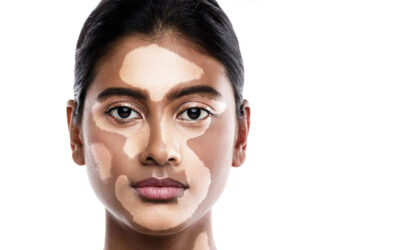From Redness to Irritation: A Complete Guide to Skin Rashes

Skin rashes are among the most common dermatological problems, which can affect people of all ages. They can appear suddenly or develop gradually, and may range from mild redness to intense irritation. While many rashes are harmless and temporary, others may signal an underlying condition that requires medical attention. Understanding the possible causes, symptoms, and treatment options is essential for managing skin rashes effectively. In this article, we’ll explore what skin rashes are, what might be causing them, and when it’s time to seek professional care.
Table of Contents
ToggleWhat Is a Skin Rash?
A skin rash is a general term used to describe any noticeable change in the colour, texture, or appearance of the skin. It may present as redness, swelling, bumps, blisters, flaking, or patches of discoloured skin. Some rashes may appear suddenly, while others develop over time.
Skin rashes are not a single condition but a symptom that can be caused by a wide range of underlying issues. They may be localised to a small area or spread across larger parts of the body. In many cases, rashes are accompanied by itching, irritation, or a burning sensation, which can affect comfort and quality of life.
Identifying the type and cause of a rash is key to managing it effectively and preventing complications.
Common Causes of Skin Rashes
Skin rashes can be triggered by a variety of factors—ranging from external irritants to internal health conditions. Understanding the root cause is the first step toward appropriate treatment.
Some of the most common causes include:
- Allergic Reactions: Exposure to allergens such as soaps, detergents, cosmetics, latex, or certain fabrics can lead to contact dermatitis, resulting in redness, itching, and inflammation.
- Infections: Rashes may be caused by bacterial, viral, or fungal infections. Conditions such as ringworm, chickenpox, or impetigo often present with visible skin changes and may require medical treatment.
- Autoimmune Disorders: Conditions such as psoriasis or lupus can cause chronic rashes due to immune system dysfunction. These rashes may be persistent and may come with other systemic symptoms.
- Environmental Triggers: Factors such as heat, humidity, excessive sun exposure, or insect bites can irritate the skin and lead to rashes, especially in sensitive individuals.
- Medications and Underlying Illnesses: Certain medicines may cause drug-related rashes as a side effect. Additionally, rashes can be linked to systemic conditions such as liver or kidney disease.
Symptoms to Watch For
Skin rashes can vary widely in appearance and sensation, depending on the underlying cause. Recognising the key symptoms can help in identifying whether a rash is temporary or a sign of something more serious.
Common symptoms associated with skin rashes include:
- Redness or Discolouration: Affected areas may appear pink, red, or darker than the surrounding skin.
- Itching or Burning: Many rashes are accompanied by persistent itching or a stinging sensation.
- Swelling or Raised Patches: The skin may become inflamed or develop raised, bumpy textures.
- Blisters or Crusting: Some rashes result in fluid-filled blisters that may later burst and form a crust.
- Flaking or Dryness: In chronic or irritant-related cases, the skin may become rough, dry, or scaly.
While mild symptoms may go away with basic care, persistent or worsening signs should not be ignored, especially if they interfere with sleep, daily activities, or overall comfort.
When to See a Doctor
While many skin rashes are mild and resolve on their own, some may indicate a more serious condition or require medical treatment. Knowing when to seek professional help is important to avoid complications and ensure proper care.
Consider consulting a doctor if:
- The rash spreads quickly or shows no improvement despite home remedies.
- There are signs of infection, such as pus, increasing pain, or fever.
- Blisters, open sores, or excessive peeling develop.
- The rash is accompanied by other symptoms, such as joint pain, fatigue, or difficulty breathing.
- It interferes with daily life, causing sleep disturbance, intense discomfort, or emotional distress.
Diagnosis and Evaluation
Diagnosing the cause of a skin rash involves more than just observing its appearance. Since different conditions can produce similar symptoms, a thorough clinical assessment is essential for accurate treatment.
At a hospital or dermatology clinic, evaluation typically includes:
- Detailed Medical History: Doctors may ask about recent exposures, medications, family history of skin conditions, or any new products used.
- Physical Examination: The affected area is closely examined to assess the type, pattern, and extent of the rash.
- Allergy Testing: If an allergic reaction is suspected, patch testing or blood tests may help identify the specific allergen.
- Skin Scrapings or Swabs: Samples may be taken to check for fungal, bacterial, or parasitic infections under a microscope or through lab cultures.
- Skin Biopsy: In chronic or unclear cases, a small skin sample may be sent for histopathological analysis to confirm autoimmune or complex skin conditions.
Treatment Options
The treatment for a skin rash depends on its underlying cause, severity, and duration. In many cases, a combination of medications and lifestyle adjustments is recommended to relieve symptoms and prevent recurrence. Common treatment approaches include:
- Topical Medications: Creams or ointments containing corticosteroids, antihistamines, antifungals, or antibiotics may be prescribed to reduce inflammation, control infection, or relieve itching.
- Oral Medications: Antihistamines help manage allergic reactions, while antibiotics or antifungal tablets may be needed for more widespread infections. In autoimmune conditions, immunosuppressive medicines might be considered.
- Skincare Adjustments: Using fragrance-free, mild soaps and moisturisers can help soothe irritated skin and support healing.
- Avoiding Triggers: Identifying and avoiding known irritants, such as harsh chemicals, allergens, or synthetic fabrics, can prevent flare-ups.
- Cooling or Soothing Remedies: Cool compresses, oatmeal baths, or calamine lotion may provide temporary relief from itching or burning.
Note: While you can use an over-the-counter moisturizer or plain calamine, never use any medicated OTC, especially steroids without getting the rashes checked by a dermatologist. Treatment should always be guided by a dermatologist, especially if the rash is recurring, spreading, or unresponsive to over-the-counter remedies.
Preventing Skin Rashes
While not all rashes can be prevented, adopting a few simple habits can significantly reduce the risk, especially for those with sensitive skin or known triggers. Here are some practical tips to prevent skin rashes:
- Choose mild, fragrance-free products: Use gentle soaps, shampoos, and detergents to avoid skin irritation.
- Wear breathable clothing: Cotton and other natural fabrics help prevent heat rashes and reduce friction on the skin.
- Stay hydrated: Drinking enough water keeps the skin healthy and reduces skin dryness and flaking.
- Avoid known allergens and irritants: Be cautious with cosmetics, jewellery, plants, or substances that have triggered reactions in the past.
- Protect your skin in harsh weather: Use sunscreen during summers and moisturisers during winters to avoid sunburn or dryness.
- Maintain good hygiene: Regular bathing and clean clothing reduce the risk of fungal and bacterial infections, especially in humid climates.
Why Choose Graphic Era Hospital for Skin Rash Treatment?
At Graphic Era Hospital, skin rashes are treated with a focus on both precision and patient comfort. The dermatology team brings together clinical expertise and a personalised approach to care, ensuring that each case is thoroughly evaluated and effectively managed.
Here’s what sets the hospital apart:
- Expert Care: Experienced dermatologists and specialists work closely with patients to identify the root cause of skin rashes and recommend targeted treatment plans.
- Advanced Diagnostic Support: Access to laboratory services, allergy testing, and biopsy facilities enables accurate diagnosis, even for complex or chronic skin conditions.
- Patient-Centred Approach: Every individual is treated with sensitivity and respect, with clear communication, tailored advice, and ongoing support throughout their treatment journey.
Whether dealing with an acute allergic reaction or a recurring skin issue, Graphic Era Hospital offers comprehensive care designed to restore both skin health and peace of mind.
Frequently Asked Questions
Can stress cause skin rashes?
Yes, stress can trigger or worsen certain types of skin rashes, such as eczema or hives. Managing stress through relaxation techniques and lifestyle changes may help prevent flare-ups.
Are all skin rashes contagious?
No, not all rashes are contagious. While some infections like ringworm or scabies can spread, others caused by allergies or autoimmune conditions are not transmissible.
How long does it take for a rash to go away?
The duration depends on the cause. Mild allergic rashes may clear in a few days, while chronic conditions like psoriasis may require ongoing management.
Can over-the-counter creams treat all types of rashes?
OTC creams can help in mild cases, but persistent, spreading, or painful rashes should be assessed by a dermatologist to avoid complications or incorrect treatment.
What is the difference between a rash caused by an allergy and one caused by infection?
Allergic rashes often appear soon after exposure to a trigger and are usually itchy and red. Infectious rashes may also cause pain, blisters, or fever and can spread if untreated.
By Specialities
- Bariatric Surgery
- Cancer Care
- Cardiology
- Dental
- Dermatology
- Diabetes & Endocrinology
- Endocrinology and Diabetes
- ENT (Ear Nose Throat)
- Eye Care
- Gastroenterology
- Haematology
- Health Care
- Health Tips
- Hematology
- Hepatology
- Internal Medicine
- Mental Health and Behavioural Sciences
- Metabolic
- Neonatology
- Nephrology
- Neurology
- Nutrition & Dietetics
- Obstetrics & Gynaecology
- Oncology
- Ophthalmology
- Orthopaedics
- Paediatric
- Physiotherapy & Rehabilitation
- Plastic and Reconstructive Surgery
- Psychology
- Pulmonology
- Rheumatology
- Spine
- Urology
Recent Posts
- Puffy Eyes Explained: Causes, Home Remedies, and Medical Treatments
- Dry Skin in Winter? Here’s Why It Happens and How to Treat It
- Increased Heart Rate: Causes, Risks, and When to Seek Medical Attention
- International Day of Persons with Disabilities 2025: Breaking Barriers, Building a More Inclusive Future
- Whooping Cough (Pertussis): Symptoms You Should Never Ignore
Need expert medical advice?
Share your details and our healthcare specialists will reach out to assist you.
By proceeding, you acknowledge and agree to our Privacy Policy, Terms of Use, and Disclaimer.


















